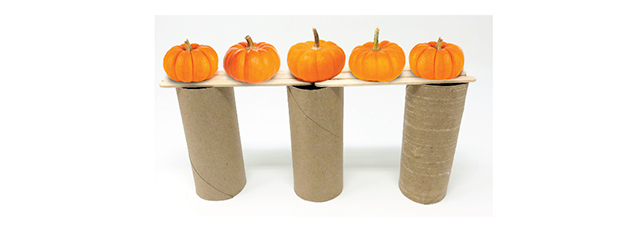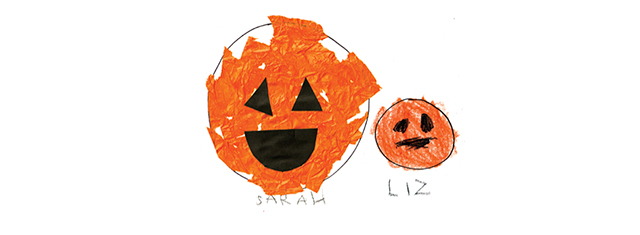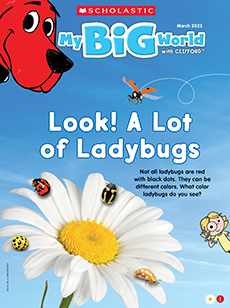Pumpkin Surprises in Different Sizes Lesson Plan
What We Are Learning
Science Focus:
pumpkins
Theme Vocabulary:
big, small, patch, seeds, roast, jack-o’-lantern
Skills We’re Practicing:
group discussion, critical thinking, vocabulary, comparing size
- In The Biggest Pumpkin Ever by Steven Kroll, two mice each want to grow the biggest pumpkin in town. As you read, ask students to recount what is happening in the story. Why did the pumpkin grow to be so big? Were both mice happy in the end? Why?

Materials: any story or poem featuring five little pumpkins, five mini pumpkins, building blocks, other building materials (e.g. toilet paper rolls, craft sticks, pipe cleaners, cardboard)
- Help bring the story of five little pumpkins to life but with an engineering twist!
- Read a story or poem featuring five little pumpkins. Then ask, “Do you think you can build a gate or a fence to hold five pumpkins?”
- Bring the mini pumpkins to the block area of your classroom. Ask your students to build a structure that can hold the mini pumpkins.
- They can use table blocks and other building materials, such as toilet paper rolls, craft sticks, and cardboard.
- Have children work in small groups or pairs to create their structures then test them out. If the pumpkins fall, brainstorm ways to make their structure stronger. Then test it again! engineering/cooperation

Materials: white construction paper, art materials (e.g. crayons, paint, glue, tissue paper)
- Help students explore size, shape, and scale with this creative activity!
- Give each student a sheet of paper. Tell them that they are going to design a big pumpkin and a mini pumpkin. Have them draw a small circle in the lower right corner of the paper, and a large circle taking up the rest of the empty space.
- Then guide children as they design their pumpkins. Ask questions like, “Is your pumpkin happy or scary? What shape would you like your pumpkin’s eyes to be? Is your pumpkin smooth or bumpy?” Help students to realize their vision using the materials you have. (Note: Using torn tissue paper and glue creates a three-dimensional/bumpy texture, while using oil pastels yields a smooth texture.)
- When students have completed their creations, have them bring their pumpkin designs to the meeting area to discuss. Have them talk about the materials they used and give their pumpkin friends names! fine-motor skills/art
